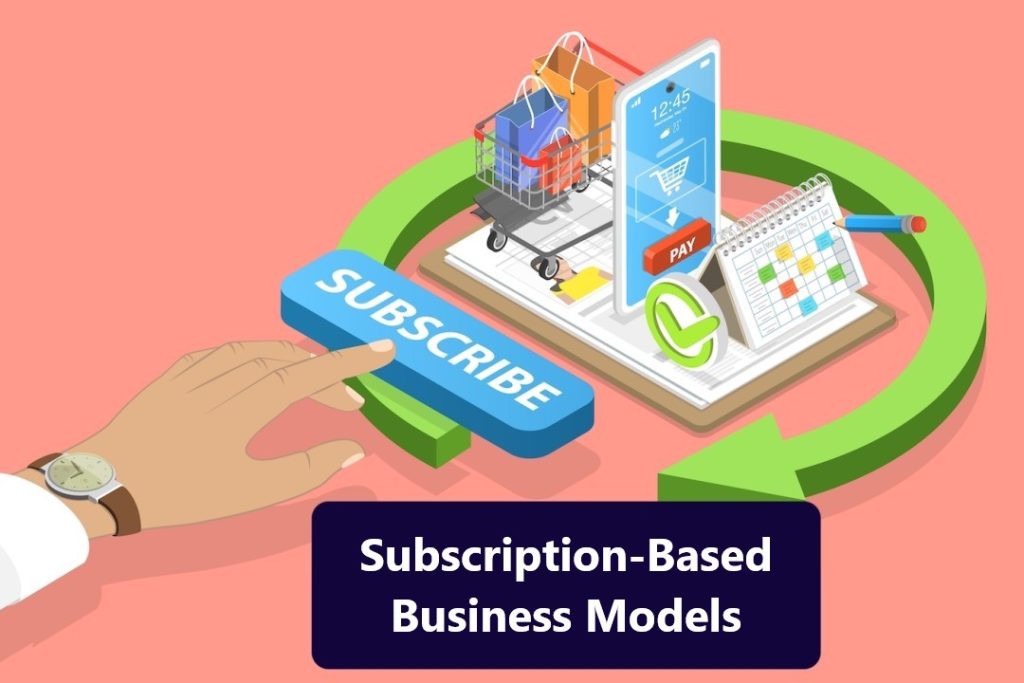
Subscription-based business models have become one of the most efficient ways for companies to generate steady revenue streams. With the rise of digital platforms, this model has spread across many industries, including streaming, software, and fitness plans. Businesses offer recurring access to products or services, allowing them to create predictable revenue streams. This approach also helps companies build long-term relationships with their customers, increasing loyalty.
Why Subscription-Based Business Models Are Thriving
The success of subscription-based business models lies in their ability to offer value while fostering customer loyalty. Instead of relying on one-time purchases, companies that adopt this model can count on a steady cash flow from recurring subscriptions. This predictable revenue helps businesses manage their operations more efficiently, especially when planning for future growth. Additionally, subscription services cater to customers’ desire for convenience, allowing them to automate recurring purchases without the hassle of reordering manually.
At the same time, many businesses have found that subscription models help them adapt to changing consumer behaviors. As customers increasingly prioritize experiences over ownership, services like streaming platforms and monthly subscription boxes thrive. For companies, this means being able to provide ongoing value and personalized experiences that retain customers over time. By focusing on delivering regular updates, new features, or exclusive content, businesses can continue to engage and satisfy their subscribers.
The Types of Subscription-Based Business Models
There are various types of subscription-based business models, each catering to different customer needs. Media and entertainment companies, like Netflix and Spotify, operate on a digital content subscription model. Customers pay a recurring fee for unlimited access to content, often offered at multiple pricing tiers to suit different needs. These services provide continuous value by updating their libraries regularly and personalizing content recommendations based on user preferences.
Another common model is the product subscription service, popularized by companies such as Dollar Shave Club and Blue Apron. Customers receive curated products delivered to their doorstep on a regular schedule, often tailored to their specific preferences. This model is highly convenient for customers, particularly for consumable goods, as it eliminates the need for constant reordering.
A newer trend in the world of Subscription-Based Business Models is the SaaS (Software as a Service) model, which has revolutionized how software is delivered and consumed. Instead of purchasing software outright, customers subscribe to cloud-based solutions like Microsoft 365, Salesforce, or Adobe Creative Cloud. These platforms offer continuous access to the latest features and updates without requiring customers to invest in costly upgrades or new licenses.
Benefits
For businesses, Subscription-Based Business Models provide a wealth of benefits, starting with predictable revenue streams. This consistency makes it easier to forecast income, manage cash flow, and invest in growth. With a clearer picture of their financial future, companies can take calculated risks, such as expanding product lines or entering new markets.
Another significant advantage is the ability to build long-term customer relationships. By regularly delivering value to subscribers, companies foster loyalty, reducing churn and increasing customer lifetime value. Subscription models also generate valuable customer data, enabling businesses to better understand consumer preferences and behaviors. This data can be used to tailor marketing efforts, improve products, and enhance customer experience.
Furthermore, subscription-based models encourage innovation and ongoing improvement. Since customers expect continuous value, businesses are motivated to introduce new features, products, or services regularly. This focus on constant improvement not only helps retain subscribers but also attracts new customers who are interested in the company’s evolving offerings.
Challenges
Despite their many advantages, Subscription-Based Business Models also present challenges. One of the biggest obstacles is customer retention. While it may be relatively easy to acquire new subscribers, keeping them engaged and satisfied over the long term requires consistent effort. Businesses must work to reduce churn by continuously offering value and ensuring that customers feel they are getting their money’s worth.
Another challenge is pricing. Determining the right subscription price can be tricky, as businesses must strike a balance between generating sufficient revenue and offering competitive pricing. Overpricing can lead to high churn rates, while underpricing can erode profit margins. Many companies address this by offering tiered pricing structures, which allow customers to choose a plan that best fits their needs and budget.
Additionally, the growing competition in the subscription space means that companies need to differentiate themselves to stay relevant. As more businesses adopt subscription models, customers have a wealth of options to choose from, increasing the likelihood of cancellations if they find a better offer elsewhere. To remain competitive, companies must focus on personalization, convenience, and customer experience to stand out in a crowded marketplace.
The Future of Subscription-Based Business Models
As subscription-based business models evolve, new trends are emerging that will shape their future. One key trend is integrating AI and machine learning to improve customer experiences. By analyzing data, businesses can provide personalized recommendations, promotions, and insights, driving engagement and satisfaction.
Sustainability is also becoming crucial to subscription models’ success. With consumers focusing more on eco-friendly practices, companies offering sustainable options are gaining traction. Services reducing waste, such as those using reusable packaging, are seeing increased demand.
As businesses move to digital platforms, hybrid models combining product and service subscriptions are rising. This approach could provide growth opportunities by merging physical products with digital services.
Subscription-based models remain effective for generating recurring revenue and building long-term relationships. Offering continuous value helps businesses retain subscribers, foster loyalty, and stay competitive. By focusing on innovation and customer experience, companies will be well-positioned for future growth.

